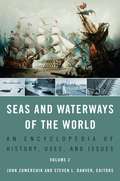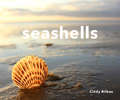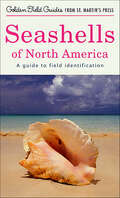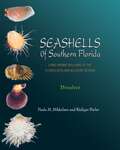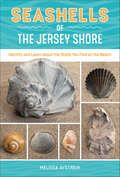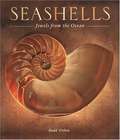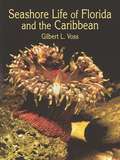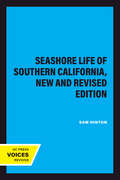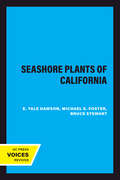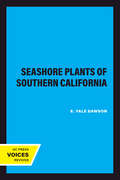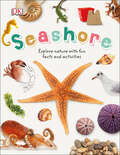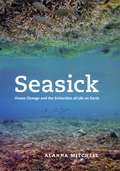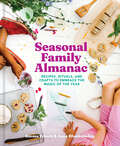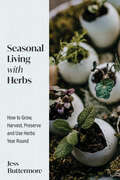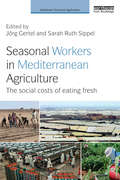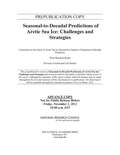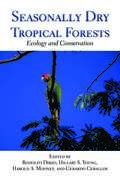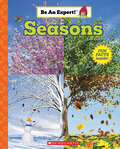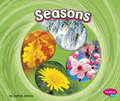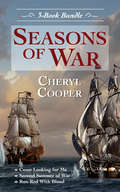- Table View
- List View
Searching for the Snow Leopard: Guardian of the High Mountains
by Shavaun Mara KiddA stunning visual and personal journey in search of the iconic big cat, the snow leopard.The snow leopard, known as the ghost of the mountains, is an elusive predator that has captured the human imagination for eons. Yet, by nature secretive, living at altitudes of up to 19,000 feet in one of the world's harshest environments, it is notoriously difficult to see. Those lucky enough to encounter one speak of the experience as momentous, transformative, even spiritual. In this handsomely illustrated, eloquent book, published in partnership with the Snow Leopard Conservancy, world-renowned wildlife photographers, naturalists, and conservationists take the reader closer than most humans will ever get to knowing snow leopards and understanding why these beautiful big cats have for so long been considered the most mysterious of all.More than 130 breathtaking photographs—all taken in the wild, and none with camera traps—accompany personal narratives and anecdotes that convey the experience of learning to see; the patient pursuit, following the tracks and other sign for a momentary glimpse; an unexpected encounter; watching the predator hunt; a magical moment with a mother and her cubs. A special "seek and find" section challenges readers to spot the snow leopard—to discern camouflage from rock and snow. The text also relates the natural history of the snow leopard, its cultural significance and place in lore, its interactions with local peoples, and information about its conservation.Royalties from the sales of Searching for the Snow Leopard support the Snow Leopard Conservancy and its programs.
Seas And Waterways Of The World: An Encyclopedia Of History, Uses, And Issues
by John Zumerchik Steven L. Danver Steven Laurence DanverWritten at the level of high school and up, this two-volume reference offers an introduction to the use of the world's seas and waterways in history and during modern times, emphasizing the importance of seas and waterways to civilization. The reference's 134 entries are grouped in three sections. The section on the history of the world's seas and waterways contains entries on specific bodies of water around the world. The section on uses of the world's seas and waterways describes areas such as agriculture, coastal tourism, diving, oil and natural gas, sailing, surfing, passenger shipping, wave energy, and wind energy. The last section looks at issues pertaining to seas and waterways, such as cartography, dredging, lighthouses, laws and treaties, port operations, research vessels, and trade and transportation. Many entries contain b&w photos and maps. A chronology and a glossary are included. Zumerchik has written a previous reference work. Danver teaches history at National University.
Seashell Detective (Fountas & Pinnell Classroom, Guided Reading)
by Alice McGintyNIMAC-sourced textbook. THE SECRETS OF SEASHELLS. Did you ever pick up a seashell and wonder about the creature that once lived inside? How could you find out the answer? In this book, you will learn how to become a seashell detective.
Seashells
by Cindy BilbaoExperience the magic of the beach with this photographic collection of treasures in the sand Seashells are tiny treasures, each one completely unlike any other. Their variety of shapes, colors, and sizes makes collecting—and even searching for—seashells a favorite pastime of avid and occasional beachcombers alike. As she did for the ocean’s other jewels in Sea Glass and Sea Glass Seeker, photographer Cindy Bilbao captures the ridges, striations, and hues of delicate shells everywhere she finds them. Displaying sun- bleached fragments, glittering, cantaloupe- colored nacre, and scallop shells washed by the tides, Bilbao’s photographs embody magic and mystery. From weathered quahogs and mussels on the cooler shores of New England to a rich, chestnut-colored Florida Fighting Conch shell nestled in the sands of its namesake state, she describes in intricate detail how these shells are formed and why they look the way they do. Complete with Bilbao’s expert tips for finding the most unique shells and enjoying the hunt, Seashells is the perfect gift for any anyone who loves the beach.
Seashells of North America: A Guide to Field Identification (Golden Guides from St. Martin's Press)
by R. Tucker AbbottThis eBook is best viewed on a color device.Scoop up plentiful Cockles on Eastern beaches. Spy a fabulous Emperor Helmet in Southern Florida. Find a Red Chiton on the Pacific shore. The coasts of North America yield a wondrous variety of shells, from the majestic Conch to tiny Bittium. This beautifully illustrated guide, Seashells of North America by R. Tucker Abbott, helps both the novice and experienced shell hunter distinguish between similar varieties and find the glorious specimens that become a collection's prize.-Native varieties and important introduced species-Expert tips on cleaning and preservation-Common and scientific names-Convenient measuring rules...and more!!
Seashells of Southern Florida: Living Marine Mollusks of the Florida Keys and Adjacent Regions: Bivalves
by Paula M. Mikkelsen Rüdiger BielerLocated where the Atlantic Ocean, Gulf of Mexico, and Caribbean Sea converge, the Florida Keys are distinctive for their rich and varied marine fauna. The Keys are home to nearly sixty taxonomic families of bivalves such as clams and mussels--roughly half the world's bivalve family diversity. The first in a series of three volumes on the molluscan fauna of the Keys and adjacent regions, Seashells of Southern Florida: Bivalves provides a comprehensive treatment of these bivalves, and also serves as a comparative anatomical guide to bivalve diversity worldwide. Paula Mikkelsen and Rüdiger Bieler cover more than three hundred species of bivalves, including clams, scallops, oysters, mussels, shipworms, jewel boxes, tellins, and many lesser-known groups. For each family they select an exemplar species and illustrate its shell and anatomical features in detail. They describe habitat and other relevant information, and accompany each species account with high-resolution shell photographs of other family members. Text and images combine to present species--to family-level characteristics in a complete way never before seen. The book includes fifteen hundred mostly color photographs and images of shells, underwater habitats, bivalves in situ, original anatomical and hinge drawings, scanning electron micrographs, and unique transparent--shell illustrations with major organ systems color-coded and clearly shown. Seashells of Southern Florida: Bivalves is the most complete guide to subtropical bivalves available. It is an essential tool for students and teachers of molluscan diversity and systematics, and an indispensable identification guide for collectors, scuba divers, naturalists, environmental consultants, and natural-resource managers.
Seashells of the Jersey Shore: Identify and Learn about the Shells You Find on the Beach
by Melissa AvstreihIdeal for beachgoers who want to know more about the shells they find, this well-organized book will help readers identify more than 35 of the most common seashells found on New Jersey's beaches. The well-researched guide offers information about the animals that once lived in the shells, including where they lived, what they ate, and even how they may have died. The handy guide's features include • color photographs of real shells; • fun facts about the shells and the animals that lived in them; • a section on nonshell treasures from the sea; • a user guide to help make identification simple; and • a lightweight, portable size that is perfect to tuck into a beach bag. From Sea Bright to Cape May, Seashells of the Jersey Shore will help curious beachcombers of all ages to identify and learn about the shells they find down the shore.
Seashells: Jewels from the Ocean
by Budd TitlowThey have done time as jewelry and tools, as medicines, currency, and symbols of industry--and they have intrigued people, from beach-combing toddlers to serious scientists, since time began. Native interest meets natural history in this exquisitely illustrated account of the science and culture of seashells. With closeup photography and basic explanations of different shell types--univalves, bivalves, and cephalopods--how they are formed, what mollusks inhabit them, their morphology and life cycles, and much more, this is the book for anyone with an interest in seashells. This book includes information on the bewildering array of shell shapes, colors, sizes, and types, and describes where the different shells can be found throughout the world. As informative as it is visually arresting, the book will appeal to amateur and expert, collector and casual beachcomber. Picture captions included.
Seashore Life of Florida and the Caribbean
by Gilbert L. VossAuthoritative identification guide by a noted expert illustrates and defines common marine invertebrates and plants of the Atlantic region -- from Bermuda and the Bahamas to the West Indies and the Gulf of Mexico. Invertebrates classified by phyla and subcategorized by class, order, family; detailed species description accompanies each entry. Includes color insert.
Seashore Life of Southern California, New and Revised edition (California Natural History Guides #26)
by Sam HintonThe dry land is one world and the wet sea is another, but the line separating them is ever-changing. Known as the intertidal zone, the area between the land and the sea is defined by the extremes of the tides. Sam Hinton provides an introduction to this fascinating zone and its contiguous waters and to some of the many creatures who make the southern California seacoast their home. This highly readable book has been for many years the handiest resource available for anyone wanting to explore that region's delights and mysteries. The book is filled with interesting anecdotes and drawings and has a thorough discussion of the natural forces¯the tides, winds, storms, currents, surf, and ocean chemistry¯that affect near-shore animals. Also included is a section relating the ocean forces to the intertidal habitat, along with a map of southern California locations where one might observe the organisms described in the book.
Seashore Plants of California (California Natural History Guides #47)
by Michael S. Foster E. Yale DawsonThis title is part of UC Press's Voices Revived program, which commemorates University of California Press’s mission to seek out and cultivate the brightest minds and give them voice, reach, and impact. Drawing on a backlist dating to 1893, Voices Revived makes high-quality, peer-reviewed scholarship accessible once again using print-on-demand technology. This title was originally published in 1982.
Seashore Plants of Southern California (California Natural History Guides #19)
by E. Yale DawsonThis title is part of UC Press's Voices Revived program, which commemorates University of California Press’s mission to seek out and cultivate the brightest minds and give them voice, reach, and impact. Drawing on a backlist dating to 1893, Voices Revived makes high-quality, peer-reviewed scholarship accessible once again using print-on-demand technology. This title was originally published in 1966.This title is part of UC Press's Voices Revived program, which commemorates University of California Press’s mission to seek out and cultivate the brightest minds and give them voice, reach, and impact. Drawing on a backlist dating to 1893, Voices Revived</DIV
Seashore: Explore Nature with Fun Facts and Activities (Nature Explorers)
by DKWhat shapes the shore? What causes tides? Packed with facts and activities, this book has these answers and more, and is a perfect introduction to the world of shells, fish, and birds for kids who are curious about nature.With amazing facts about fun topics like shell shapes and rock pools, Seashore lets kids have fun and be innovative as they learn through simple activities like making and testing a paper boat, and recording and drawing the sea creatures they find on the shore.With its natural look and feel and its practical approach to learning, Seashore is sure to make waves in the lives of little explorers.Series Overview: DK's revised Nature Explorers series is a fantastic first set of books on the great outdoors for children ages 6 to 8. From birds to weather to the seashore and more, the key topics of each subject are explained with plenty of fun activities to do along the way, encouraging kids to investigate and record everything they see. Fully updated with a contemporary design, DK's Nature Explorer series is perfect for kids who are curious about the world outside and want to discover nature.
Seasick: Ocean Change and the Extinction of Life on Earth
by Alanna MitchellIn Seasick, Alanna Mitchell dives beneath the surface of the worlds oceans to give readers a sense of how this watery realm can be managed and preserved, and with it life on earth.
Seaside Stroll
by Charles TrevinoGo on a snowy, sandy shore walk in a story where every single word starts with the letter S!Explore the beach in winter in this story told through clever language. During a sunset beach saunter, a girl stumbles and drops her doll into a tidal pool. Soaked! Celebrating the natural silence of an off-season location, the surf and sand are brought to life through this engaging story.
Season Songs
by Ted HughesThis is a wonderful collection of poems, by Ted Hughes the poet working with a subject matter he had mastered and revisited for most of his life: the world of animals, plants and nature.
Seasonal Family Almanac: Recipes, Rituals, and Crafts to Embrace the Magic of the Year
by Emma Frisch Jane BlankenshipAn indispensable guide and hands-on resource for families that want to joyfully build or deepen their connection with nature through a range of recipes for cooking, wellness, personal care, and crafts all year long.Emma Frisch and Jana Blankenship have a kindred friendship from their shared experiences as mothers, entrepreneurs, and nature lovers. Observing a growing demand from families wanting to reconnect to nature, they created this fun and practical resource.Seasonal Family Almanac gives families the tools to rediscover the soul-stirring magic that comes from living in tune with the seasons. Organized into twelve chapters and with content from a host of diverse contributors, it includes: Over 40 delicious food and beverage recipes from around the world, inspired by the authors' heritage and community, including Soothing White Pine Tea; Lunar New Year Dumplings; and Blueberry Lavender Crisp BarsOver 30 personal care and wellness recipes ranging from Violet and Dandelion Face Steam to a complete Newborn Care Kit, Clearing Chest Rub, and Forest Bathing Salts25 crafts and activities including beautiful and easy twisted rope flower crowns, beginner-friendly botanically dyed capes, shadow puppets, and more.An invaluable resource for essential wisdom and creative inspiration every day of the year.
Seasonal Living with Herbs: How to Grow, Harvest, Preserve and Use Herbs Year Round
by Jess ButtermoreEnhance Your Home and Health with Seasonal HerbsThe ultimate guide to seasonal herbs, Seasonal Living with Herbs is a transformative book that explores the medicinal, culinary, and crafting uses of herbs.Unlock the full potential of seasonal herbs. This is your go-to resource for discovering the extraordinary benefits of nature's bounty. Learn how to preserve herbs and harness their medicinal properties, explore creative ways to use herbs in your everyday life, and cultivate a deeper connection to the natural world.Discover the secrets of herbal abundance with Seasonal Living with Herbs—a comprehensive book that invites you to embrace the beauty and benefits of seasonal herbs. With guidance for growing and caring for herbs in every season, you'll learn to harness their full potential. Delight in the herbal spotlights specific to each season, savor the flavors of seasonal recipes, and create stunning crafts that celebrate the natural world. From cultivating your own herb garden to preserving their essence, this book empowers you to infuse your daily life with the magic of herbs.Inside, you'll find:Herbal spotlights highlighting the unique properties of seasonal herbsRecipes using herbs that showcase their flavors and aromasFrom your garden to your craft projects inspired by the beauty of herbsStep-by-step instructions on how to preserve herbs and their benefitsIf you enjoyed books on how to use herbs like The Herbal Medicine-Maker's Handbook, The Herbal Kitchen, or The Healing Kitchen, you'll love Seasonal Living with Herbs.
Seasonal Plant Dyes: Creating Year Round Colour From Plants, Beautiful Textile Projects (Crafts Ser.)
by Alicia Hall“Fascinating and well-illustrated . . . Hall has in the main selected plants which do not require excessively arcane procedures to produce exquisite colors.” —AboutMyGenerationThis beautifully illustrated book takes you on a botanical journey through the year, showing you how to create colorful and environmentally friendly plant dyes. You’ll learn sustainable methods of growing and harvesting plants; the tools and techniques required to extract dye; which fabrics and yarns to choose; and the simple method of using soy milk as a fixative, to ensure rich and long-lasting colors. The book includes easy-to-follow tutorials explaining how to make four stunning pieces using seasonal plant dyes: a linen cushion cover, embroidered picnic blanket, hot water bottle cozy, and quilt.“The new book Seasonal Plant Dyes by Alicia Hall walks us through the process featuring plants to use at their peak in spring, summer, autumn, and winter to create an array of gorgeous colors and textures only natural dyes can achieve.” —Empress of Dirt“Some amazing facts about plants . . . Nature fools us all in to thinking yellow flowers would produce various shades of yellow dyes and all leaves would give green dyes of different hues. This is not so! Who would have believed for instance that a dark purple Buddleia flower would produce a dye of buttercup yellow. 104 pages of fascinating information and I can’t wait to try my first dye! A well written book that’s a delightful and interesting read.” —For the Love of Books
Seasonal Workers in Mediterranean Agriculture: The Social Costs of Eating Fresh (Earthscan Food and Agriculture)
by Sarah Ruth Sippel JörgOver the last three decades there has been a rapid expansion of intensive production of fresh fruit and vegetables in the Mediterranean regions of south and west Europe. Much of this depends on migrating workers for seasonal labour, including from Eastern Europe, North Africa and Latin America. This book is the first to address global agro-migration complexes across the region. It is argued that both intensive agricultural production and related working conditions are highly dynamic. Regional patterns have developed from small-scale family farming to become an industrialized part of the global agri-food system, which increasingly depends on seasonal labour. Simultaneously, consumer demand for year-round supply has caused relocations of the industry within Europe; areas of intensive greenhouse production have moved further south and even into North Africa. The authors investigate this Mediterranean agri-food system that transcends borders and is largely constituted by invisible seasonal work. By revealing the story of food commodities loaded with implications of private profit seeking, exploitation, exclusion and multiple insecurities, the book unmasks the hidden costs of fresh food provisioning. Three case study areas are considered in detail: the French region of Provence, a traditional centre of fresh fruit and vegetable cultivation; the Spanish Almería region where intensive production has, accelerated dramatically since the 1970s; and Morocco where counter-seasonal production has recently been expanding. The book also includes commentaries that refer to complemetary insights on US-Mexico, Philippines-Canada and South Pacific mobilities.
Seasonal-to-Decadal Predictions of Arctic Sea Ice: Challenges and Strategies
by Committee on the Future of Arctic Sea Ice Research in Support of Seasonal-to-Decadal PredictionsRecent well documented reductions in the thickness and extent of Arctic sea ice cover, which can be linked to the warming climate, are affecting the global climate system and are also affecting the global economic system as marine access to the Arctic region and natural resource development increase. Satellite data show that during each of the past six summers, sea ice cover has shrunk to its smallest in three decades. The composition of the ice is also changing, now containing a higher fraction of thin first-year ice instead of thicker multi-year ice. Understanding and projecting future sea ice conditions is important to a growing number of stakeholders, including local populations, natural resource industries, fishing communities, commercial shippers, marine tourism operators, national security organizations, regulatory agencies, and the scientific research community. However, gaps in understanding the interactions between Arctic sea ice, oceans, and the atmosphere, along with an increasing rate of change in the nature and quantity of sea ice, is hampering accurate predictions. Although modeling has steadily improved, projections by every major modeling group failed to predict the record breaking drop in summer sea ice extent in September 2012. Establishing sustained communication between the user, modeling, and observation communities could help reveal gaps in understanding, help balance the needs and expectations of different stakeholders, and ensure that resources are allocated to address the most pressing sea ice data needs. Seasonal-to-Decadal Predictions of Arctic Sea Ice: Challenges and Strategies explores these topics.
Seasonally Dry Tropical Forests: Ecology and Conservation
by Harold A. Mooney Hillary S. Young Gerardo Ceballos Rodolfo DirzoThough seasonally dry tropical forests are equally as important to global biodiversity as tropical rainforests, and are one of the most representative and highly endangered ecosystems in Latin America, knowledge about them remains limited because of the relative paucity of attention paid to them by scientists and researchers and a lack of published information on the subject. Seasonally Dry Tropical Forests seeks to address this shortcoming by bringing together a range of experts in diverse fields including biology, ecology, biogeography, and biogeochemistry, to review, synthesize, and explain the current state of our collective knowledge on the ecology and conservation of seasonally dry tropical forests. The book offers a synthetic and cross-disciplinary review of recent work with an expansive scope, including sections on distribution, diversity, ecosystem function, and human impacts. Throughout, contributors emphasize conservation issues, particularly emerging threats and promising solutions, with key chapters on climate change, fragmentation, restoration, ecosystem services, and sustainable use. Seasonally dry tropical forests are extremely rich in biodiversity, and are seriously threatened. They represent scientific terrain that is poorly explored, and there is an urgent need for increased understanding of the system's basic ecology. Seasonally Dry Tropical Forests represents an important step in bringing together the most current scientific information about this vital ecosystem and disseminating it to the scientific and conservation communities.
Seasons (Be an Expert!)
by Erin KellyKids love to be the experts! Now they can feel like real pros with this exciting nonfiction series for beginning readers. Kids will be hooked on the thrilling real-world topics and big, bright photos. Each book features simple sentences and sight words that children can practice reading. Then, with support, kids can dig deeper into the extra facts, Q&As, and fun challenges.Fans of this series will be eager to become real experts!Some are warm and sunny. Some are cold and wet. There are four different seasons in a year! What do you know about winter, spring, summer, and fall? With this book you can become an expert!
Seasons (Cycles of Nature)
by Jaclyn JaycoxWhat time of year do leaves change color? Why can’t flowers grow in the snow? Track all four seasons and discover the importance of weather patterns to plant and animal life,
Seasons of War 3-Book Bundle: Come Looking for Me / Second Summer of War / Run Red With Blood (Seasons of War)
by Cheryl CooperDuring the War of 1812, a young woman with a mysterious past and connections in very high places flees England for new adventures. Book #1 – Come Looking for Me Fleeing England, a mysterious young woman named Emily risks the Atlantic during the War of 1812 for a new adventure in Canada. She never arrives. Deadly sea battles with Americans and a ship's captain hell-bent on revenge make her crossing treacherous, terrifying, and, should her true identity be revealed, tragic. Book #2 – Second Summer of War A tale of life on the sea in the summer of 1813, through England's stodgy salons and horrific prison hulks, and into the bloody battles between the British and the Americans on the storm-tossed Atlantic. Book #3 – Run Red with Blood Disguised as a man, Emily steals aboard Fly Austen's frigate only to find herself up against unpleasant passengers, Atlantic storms, and battles with the Americans.

